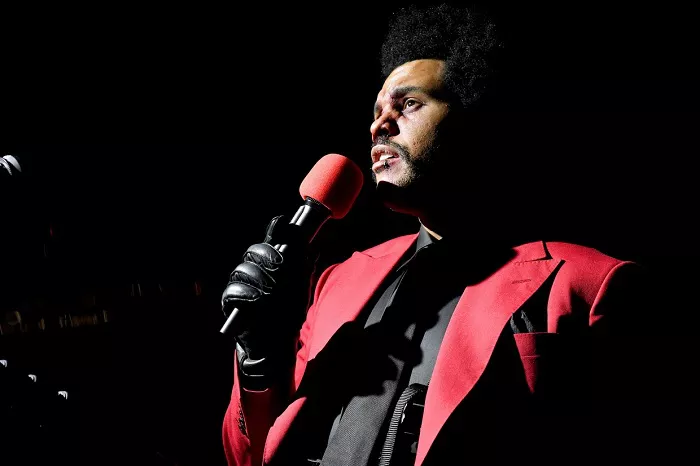R&B, short for Rhythm and Blues, is a genre known for its smooth melodies, soulful vocals, and deep emotional connections. Over the years, it has evolved and branched out into various subgenres, each offering a unique twist on its classic sound. One such subgenre that has been gaining momentum in recent years is “Dark R&B.” In this article, we will delve deep into the enigmatic realm of Dark R&B, dissecting its origins, characteristics, and the artists who have made it a prominent force in contemporary music.
The Origins of Dark R&B: A Journey Through Time
To understand Dark R&B, we must first trace its roots within the broader R&B genre. R&B has a rich history, dating back to the early 20th century when it emerged from African American musical traditions, blending elements of blues, jazz, and gospel. The term “Rhythm and Blues” was coined in the 1940s, and the genre gained popularity as it became a platform for Black artists to express their experiences and emotions.
Dark R&B, in many ways, draws inspiration from this historical context. It takes the fundamental elements of R&B, such as expressive vocals and soulful melodies, and infuses them with a darker, more mysterious atmosphere. This subgenre can be seen as a natural progression, an evolution of the traditional R&B sound.
Defining Dark R&B: A Symphony of Shadows and Emotions
What sets Dark R&B apart from its mainstream counterpart is its mood and subject matter. In Dark R&B, artists explore themes that are often raw and emotionally charged, delving into the complexities of human relationships, personal struggles, and the darker aspects of life. The music itself incorporates elements of other genres, such as electronic, hip-hop, and even elements of rock, to create a distinctive sonic palette.
R&B, at its core, is about emotions, and Dark R&B takes this to the extreme. It’s a genre where heartbreak, betrayal, and introspection are laid bare in the lyrics and melodies. Artists often experiment with unconventional production techniques, including eerie synthesizers, haunting vocal effects, and unconventional song structures, all aimed at creating an atmosphere that is both captivating and unsettling.
The Artists Who Define Dark R&B: Pioneers of a New Sound
Several artists have played pivotal roles in shaping the landscape of Dark R&B, pushing the boundaries of the genre and expanding its reach. One such trailblazer is The Weeknd. With his debut mixtape “House of Balloons” in 2011, The Weeknd introduced the world to a new brand of R&B, one that was drenched in darkness and despair. His falsetto vocals and lyrics that explore themes of hedonism and heartbreak set the stage for the emergence of Dark R&B as a distinct subgenre.
R&B is a genre known for its vocal prowess, and artists like Jhené Aiko have taken this aspect to new heights within the Dark R&B realm. Her ethereal voice and introspective lyrics create an intimate and haunting listening experience, perfectly encapsulating the genre’s essence. Songs like “The Worst” and “Sativa” showcase her ability to convey complex emotions through her music, a hallmark of Dark R&B.
Another artist who deserves mention is FKA twigs, whose avant-garde approach to R&B has blurred the lines between genres. Her hauntingly atmospheric soundscapes and visually striking music videos have pushed the boundaries of what R&B can be, embracing the dark and enigmatic side of the genre.
The Influence of Dark R&B: Shaping Contemporary Music
R&B, as a genre, has always been a source of inspiration for other musical styles. Dark R&B, with its unique blend of emotional depth and sonic experimentation, has left an indelible mark on contemporary music. One notable example is the infusion of Dark R&B elements into mainstream pop music. Artists like Billie Eilish, with her moody and introspective style, have incorporated Dark R&B elements into their songs, broadening the genre’s reach and appeal.
Furthermore, the production techniques and soundscapes popularized by Dark R&B have influenced other genres, including hip-hop and electronic music. Producers and beatmakers have embraced the use of dark, atmospheric textures and haunting melodies, creating a sonic landscape that resonates with a wide audience.
The Future of Dark R&B: A Genre in Constant Evolution
R&B has always been a genre that evolves and adapts to the times, and Dark R&B is no exception. As artists continue to experiment with new sounds and themes, the boundaries of the genre will continue to expand. One can only speculate what the future holds for Dark R&B, but it is clear that its influence on the music industry is here to stay.
Conclusion
In conclusion, Dark R&B is a subgenre of Rhythm and Blues that has captivated audiences with its emotional intensity and mysterious allure. It draws from the rich history of R&B while pushing the boundaries of sound and subject matter. Artists like The Weeknd, Jhené Aiko, and FKA twigs have played pivotal roles in shaping the genre, and their influence can be heard across contemporary music.
As we look ahead, it’s evident that Dark R&B will continue to evolve, influencing and inspiring artists from various genres. Its ability to convey complex emotions and explore the darker aspects of life ensures that it will remain a compelling and relevant force in the music industry. So, whether you’re a long-time R&B enthusiast or a newcomer to the genre, Dark R&B offers a unique and captivating musical journey that is well worth exploring.

